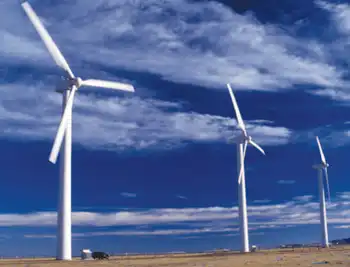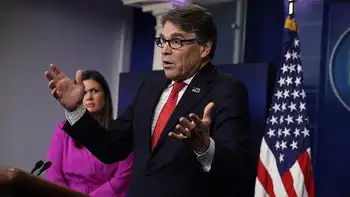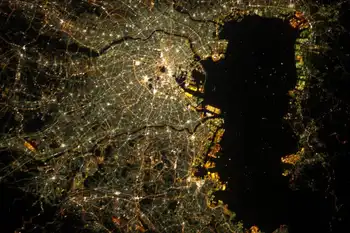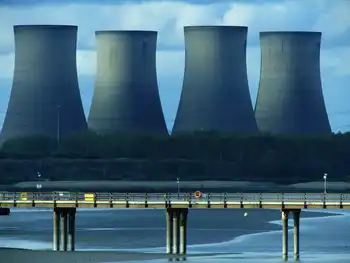Nuclear power elusive in Idaho
PAYETTE, IDAHO - It was a proud night for Idaho.
On July 17, 1955, the little town of ArcoÂ’s houselights shone brightly in the dark eastern Idaho desert for longer than an hour, a beacon of nuclear powerÂ’s future.
Its electricity — a first for the nation — came from an experimental nuclear power plant operated by Argonne National Laboratory at the U.S. Atomic Energy Commission’s National Reactor Testing Station.
In that uneasy Cold War era, the filmed experiment became part of a demonstration used at a United Nations conference in Switzerland about peaceful uses of atomic energy.
Now, more than half a century later, 31 states have operating nuclear reactors, a power source that makes up 20 percent of the nationÂ’s electricity. And Idaho, the state with a strong nuclear heritage, is among the 19 states without a nuclear reactor generating power for the grid.
The stateÂ’s latest prospect threatens to be a failure, ending with even more attention than when it began looking for a location in southern Idaho. Alternate Energy Holdings Inc. had plans to build a nuclear power plant in Payette County, but that was before charges this month from the U.S. Securities and Exchange Commission accusing the company of fraudulent dealings with investors.
That reawakens questions about IdahoÂ’s nuclear future and whether the power source has a place in the grid alongside wind, hydro, geothermal and others. The answers have more to do with geography, power needs and the challenges of getting a reactor than with AEHI.
IdahoÂ’s public officials would certainly welcome nuclear power to the state.
Gov. C.L. “Butch” Otter’s support of nuclear power in general — not AEHI specifically — is well known, though he has also stressed that other methods like wind, geothermal and biomass have a place as well in the state. The Idaho Office of Energy Resources’ 2007 energy plan includes nuclear power, along with other sources.
“We hope it is part of the future,” Paul Kjellander, administrator of OER, said of nuclear power. “It’s been, to some extent, a part of our past and we certainly hope it could be a greater part of our future.”
And the failure of any one energy project shouldnÂ’t thwart opportunities for other Idaho projects in different circumstances, he said, when asked about AEHIÂ’s issues.
“Each business that comes into the state, whether it’s energy or a manufacturer, all of them have equal opportunity to try to succeed or fail,” he said. “I wouldn’t pick one out.”
One tool Idaho has is the Idaho National Laboratory, Kjellander said. With roots extending back to that night in Arco, INL is heavily involved in modern nuclear research and technology.
But itÂ’s a bit more complicated than just assuming Idaho can easily get a nuclear plant because of INLÂ’s presence.
The laboratoryÂ’s mission isnÂ’t to advocate or organize commercial projects, but rather to perform research and provide objective facts and data to decision-makers, said Nicole Stricker, an INL spokeswoman.
“We do the research but as far as sort of predicting what’s going to happen either commercially or in the policy realm, we’re not really in the business of making those sorts of calls,” she said.
As for the bigger energy picture, Kjellander stresses the need to have a diversified portfolio of energy sources — not just one. For example, relying solely on hydropower would be problematic in a drought situation, he said.
“There is no silver bullet,” he said. “There is no single resource that is going to fix all of our energy woes.”
Nuclear can play an overall role in the future of both the nation and the state, Kjellander said, pointing to its 20 percent share of the U.S. power grid.
But nuclear development wonÂ’t come quickly, either.
“There’s no such thing as a fast track,” he said, adding that pursing a nuclear project is “not for those who have a thin stomach lining.… It’s a very long-term prospect that can carry out over 10 to 15 years.”
Nationally, the flurry of proposed nuclear reactors in recent years shows no solid prospects for Idaho. ThatÂ’s a reflection of where U.S. population centers are and where the highest needs are forecasted.
“The new plant activity here in the United States is concentrated quite recently in the American southeast,” said John Keeley, spokesman for the Nuclear Energy Institute, a Washington, D.C.-based public policy organization that advocates for the nuclear industry.
For example, activity in the near future is anticipated in Virginia and Texas.
Idaho’s lack of a nuclear plant resembles much of the northwest only one bordering state — Washington — has a nuclear plant. Of the 19 states without a nuclear plant, all but six are west of the Mississippi River.
Four to eight plants are currently in the works to be built by 2018, none of them in Idaho, Keeley said.
The federal Nuclear Regulatory Commission lists 21 applications for nuclear power plants filed since 2007, and only one — the Blue Castle project slated for Utah — is in a Rocky Mountain state.
“The big challenge for new nuclear is the cost, the startup costs,” Keeley said. “We’re talking $6 to $8 billion per reactor.… You would want to make that decision based on forecasted need for a sizable population.”
For any utility, it wonÂ’t be an investment thatÂ’s made lightly.
“Ultimately, it’s up to the individual utility to make,” Keeley said. “These are business decisions and they’re going to be made as such.”
Back home, Idaho PowerÂ’s take on nuclear energyÂ’s potential is lukewarm at best.
“We don’t have any plans to develop, own or operate any sort of nuclear facilities,” said Stephanie McCurdy, spokeswoman for the electric utility that covers much of southern Idaho.
The utility doesnÂ’t have any nuclear goals listed in its 2009 resource plan plotting out the next 20 years, which includes wind, geothermal and hydro among other power sources. ThatÂ’s despite listing nuclear as an option in its plan in 2006. At the same time, if nuclear were to come to the state and be available, Idaho Power would consider that resource, McCurdy said.
Opponents of nuclear power naturally see many more obstacles to a successful commercial reactor in Idaho.
Ken Miller is energy program director of the Snake River Alliance, an Idaho nuclear watchdog group thatÂ’s frequently critical of the industry and became AEHIÂ’s main opponent.
“There are a number of things that are weighing against developing a commercial reactor,” he said.
Beyond disposing of the waste reactors create — an issue plants face no matter their location — he said Idaho plants would have other challenges.
They include water, which is needed for cooling reactors. ThatÂ’s a scarce resource already, at least when looking at the water rights available in the Snake River.
Also, Miller claimed Idaho doesn’t need the amount of power a nuclear plant would provide, meaning the state’s transmission grid would have to be upgraded to send it elsewhere. The end result would be using Idaho’s land and water to send energy to other places, he said. “We would have to ask ourselves: What does Idaho get out of the bargain?” he said. “And the answer is: Nothing.”
Idaho doesnÂ’t have a full-scale nuclear power plant feeding into the grid, but nuclear-related development has still taken root.
French company Areva announced in 2008 plans to build a uranium enrichment plant 18 miles west of Idaho Falls. The $3 billion project has received a $2 billion loan guarantee from the U.S. Department of Energy. When its license application to the Nuclear Regulatory Commission is approved, construction on the plant can begin. The goal is to start construction next summer and begin operations in 2014, said Jarret Adams, spokesman for Areva.
ArevaÂ’s work will be in enriching uranium, a product thatÂ’s used by nuclear reactors for fuel. As such, the facilityÂ’s role will be one of providing a supply used by nuclear reactors, but not directly generating nuclear-powered electricity.
Eastern Idaho was a good location because of the skilled workforce already there due to INL, he said. The company also secured tax concessions from the Idaho Legislature.
Lindsay Nothern, spokesman for U.S. Sen. Mike Crapo, R-Idaho, said the senator supported the federal loan guarantee for Areva, a tool that makes it much easier for such a large project to secure funding.
Overall, Crapo supports nuclear power and believes there should be more plants, but the decision on where to place them shouldnÂ’t rest with federal or even state officials, Nothern said.
“That’s a decision that’s up to local folks,” Nothern said.
Geographically, Idaho also borders the next stop for the enriched uranium, which will be sent from there to a fuel plant in Richland, Wash., where it will be put into bundles of power rods, Adams said.
The plant is expected to bring about 1,000 jobs during construction, with 400 employed during the plantÂ’s operation. The economic effects extend beyond that, too, to suppliers and building companies.
Earlier this month, about 200 companies from Idaho and beyond attended an Areva event to learn about doing business with the corporation.
“We have always felt very welcomed and so far, it’s been a great place to do business,” Adams said.
Related News
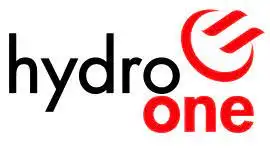
Hydro One crews restore power to more than 277,000 customers following damaging storms in Ontario
TORONTO - Hydro One crews have restored power to more than 277,000 customers following back-to-back storms, including a damaging windstorm on that caused 57 broken poles, 27 broken crossarms, as well as downed power lines and fallen trees on lines. Hydro One crews restored power to more than 140,000 customers within 24 hours of Friday's windstorm.
'We understand power outages bring life to a halt, which is why we are continuously improving our storm response while making smart investments in a resilient, reliable and sustainable electricity system to energize life for families, businesses and communities for years to come,' said David Lebeter, Chief Operating Officer, Hydro One.…

